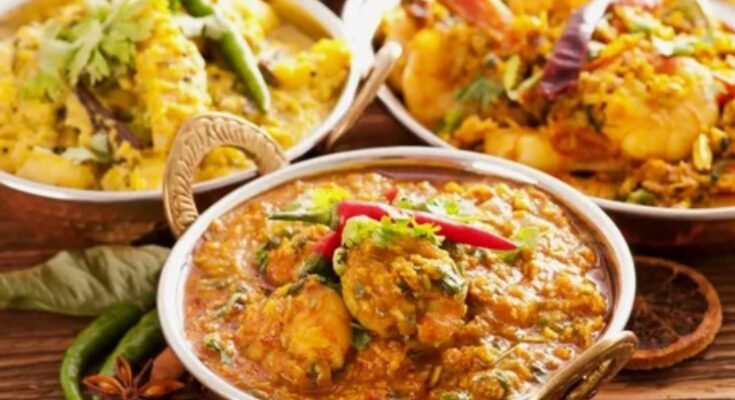In South India, Suhur holds a special place in the hearts and kitchens of families during the holy month of Ramadan. It’s a pre-dawn meal that sustains fasting individuals throughout the day, blending culinary traditions with cultural significance. Let’s explore the rich tapestry of traditional Suhur dishes that grace the tables across South India.
Introduction to Suhur in South India
What exactly is Suhur? It’s the pre-dawn meal consumed before the fast begins at sunrise during Ramadan. In South Indian Muslim households, this meal is not just about nourishment but also about communal bonding and spiritual preparation for the day ahead.
Importance of Traditional Dishes
Traditional Suhur dishes are more than just food—they are a celebration of South Indian culinary heritage. These dishes symbolize the unity of flavors and the diversity of cultures that thrive in the region.
Popular Ingredients Used
South Indian cuisine is known for its vibrant use of spices, rice, lentils, and fresh vegetables. These ingredients form the backbone of many traditional Suhur dishes, offering a blend of nutrition and taste.
Main Types of Suhur Dishes
Idli and Dosa Varieties
Plain Idli
Idli, a steamed rice cake, embodies simplicity and wholesomeness. It’s prepared by fermenting rice and lentil batter overnight, yielding a fluffy texture that’s easy to digest. Served with coconut chutney and sambar, it’s a staple in South Indian Suhur meals.
Masala Dosa
Masala Dosa, a thin, crispy crepe stuffed with a spiced potato filling, exemplifies South Indian culinary finesse. It’s enjoyed with tangy tomato chutney and coconut-based sambar, adding layers of flavor to the Suhur experience.
Pongal
Ven Pongal
Ven Pongal, a savory rice and lentil porridge cooked with ghee and peppercorns, is a comforting dish favored during Suhur. Its rich aroma and creamy texture make it a beloved choice, often paired with spicy coconut chutney.
Sakkarai Pongal
Sakkarai Pongal, a sweet variation of the dish, is prepared with jaggery, nuts, and raisins. It symbolizes festivity and is often served as a dessert during special occasions, including Suhur gatherings.
Upma and Poha
Vegetable Upma
Upma, made from semolina and mixed with vegetables like carrots and peas, offers a hearty start to the day. Seasoned with mustard seeds and curry leaves, it’s a flavorsome dish that’s quick to prepare and satisfying to eat.
Avalakki Poha
Avalakki Poha, flattened rice flakes cooked with onions, peanuts, and turmeric, is a Karnataka-style favorite. It’s light yet filling, often accompanied by a side of spicy coconut chutney for added zing.
Regional Variations Across South India
Andhra Pradesh and Telangana
Pesarattu
Pesarattu, a crepe made from green gram and rice, is a protein-packed delight. It’s served with ginger chutney and upma, reflecting the region’s love for nutritious and flavorful Suhur options.
Tamil Nadu
Adai
Adai, a thick dosa made from a blend of lentils and rice, is both wholesome and versatile. It’s enjoyed with avial, a mixed vegetable curry, showcasing Tamil Nadu’s culinary diversity.
Kerala
Puttu
Puttu, cylindrical steamed rice cakes layered with grated coconut, is a staple in Kerala’s Suhur menu. It’s often paired with kadala curry, a spicy chickpea dish, offering a delightful contrast of textures and flavors.
Cultural Significance and Festive Occasions
During Ramadan, Suhur transcends mere sustenance—it’s a time for families and communities to come together. The act of sharing traditional dishes reinforces bonds and fosters a sense of unity among neighbors.
Health Benefits of Traditional Suhur Dishes
These dishes aren’t just delicious—they’re also nutritious. They provide a balanced mix of proteins, carbohydrates, and essential fats, promoting sustained energy levels throughout the day. Additionally, the use of fresh ingredients and traditional cooking methods enhances their nutritional value.
Preparation Techniques and Methods
Traditional Suhur dishes often involve techniques like steaming, fermenting, and slow cooking, which not only enhance flavor but also preserve the nutritional integrity of the ingredients. These methods have been perfected over generations, ensuring that each dish retains its authenticity and cultural significance.
Modern Adaptations and Innovations
While traditional recipes remain cherished, modern adaptations cater to evolving tastes and dietary preferences. Health-conscious alternatives like gluten-free and vegan options are becoming increasingly popular, allowing more people to enjoy the flavors of South Indian Suhur dishes.
Conclusion
Traditional Suhur dishes from South India are more than just food—they’re a reflection of cultural richness and culinary expertise. Whether it’s the comforting flavors of Ven Pongal or the crispy perfection of Masala Dosa, each dish tells a story of tradition and community. As you explore these dishes, you not only savor their flavors but also celebrate the heritage they represent.
FAQs about Traditional Suhur Dishes
1. What is the significance of Suhur in South Indian culture? Suhur is a pre-dawn meal that prepares individuals for the day of fasting during Ramadan. It’s a time for spiritual reflection and communal bonding.
2. How are traditional Suhur dishes prepared? Most traditional Suhur dishes involve meticulous preparation, including soaking, grinding, and fermenting ingredients to achieve optimal flavor and texture.
3. What are some health benefits of these dishes? Traditional Suhur dishes are rich in nutrients, providing a balanced mix of carbohydrates, proteins, and essential fats. They also often include fiber-rich ingredients, promoting digestive health.
4. Can these dishes be adapted for dietary preferences? Yes, many traditional Suhur dishes have modern adaptations that cater to gluten-free, vegan, and other dietary preferences, ensuring inclusivity without compromising on taste.
5. How do these dishes vary across different regions of South India? Each region of South India has its own unique spin on Suhur dishes, influenced by local ingredients, traditions, and cultural practices.



